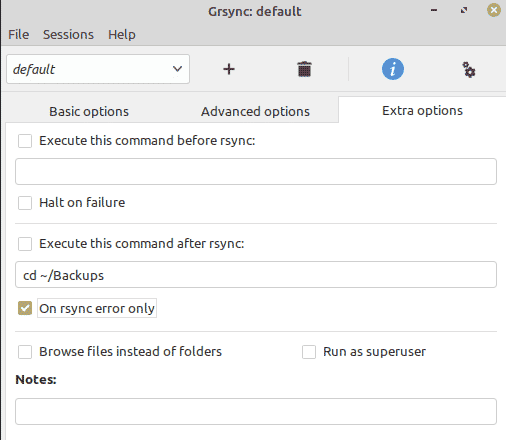
foo and re-sync: enable]# touch enable]# rsync. Like the mv and cp command, in its most basic form rsync just needs a source and a destination: enable]# rsync. So it's no surprise that it's a favorite of many systems administrators.
#Grsync linux download
Download RHEL 9 at no charge through the Red Hat Developer program.Here is the command for syncing two directories. In this example, we will sync the contents of one directory to another.

The most basic use of the rsync command in Linux is to sync files and directories. Syncing directories using the rsync command You simply need to change the destination address for remote backups (demonstrated in subsection 5 here) 1. The commands remain the same local and remote backups and for this demonstration, I’ll perform local backups. Here we explore some common useful applications of the rsync command.
#Grsync linux how to
Now that we understand how the rsync command in Linux works, it is time to learn how to use it. Practical Use of the rsync command in Linux
#Grsync linux full
Make sure to check the other options using the man command to utilize the full functionality of the rsync command. These were only the most commonly used options available with the rsync command in Linux. This is used to display the help page for the rsync command and exit. This is useful to make the destination ‘mirror’ the source. This option tells the rsync command to delete all irrelevant files at the destination location while syncing it with the source. Here, all the messages, which aren’t an error message, are not displayed on the output screen.
#Grsync linux archive
This makes the rsync utility to work in archive mode. This is an important function in the event of transferring large files over an unstable or slow connection.

Further, it retains files that have been transferred only partially. It is helpful in case the sync is taking place over a weak network connection.ĭisplay a progress bar when a data transfer is underway. This option is used for forcing the rsync utility to compress data before the transfer.

All block and special devices are transferred and all meta-data like symbolic links, ownerships and permissions are preserved. Here, all the directories are synced in a recursive manner. This is used to specify the IPv4 (for -4) or IPv6 (for -6) resolution of IP address for bridging a connection to the remote machine. Here is a list of some of the most popular rsync options. The rsync command provides a long list of options to customize the data we receive while analyzing our network.


 0 kommentar(er)
0 kommentar(er)
